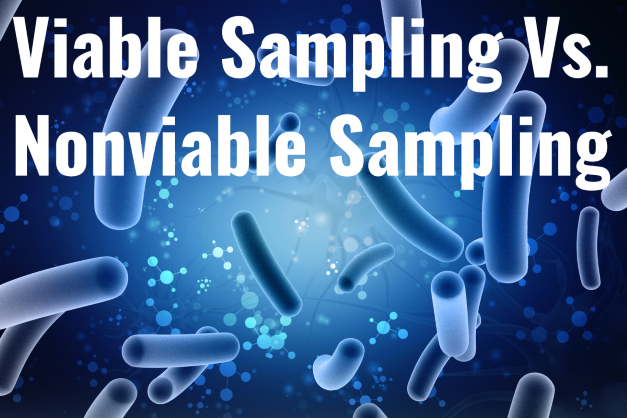Does it matter what kind of particle exists in your cleanroom? Yes, it does! Two types of contamination include viable and nonviable particles. Depending on which is present in your cleanroom, you will be able to determine where your cleanroom contamination control strategy is suffering and how to build a cleaner cleanroom. To determine the difference and presence in your cleanroom, you need to employ viable and nonviable sampling.
What Is Viable Sampling?
A viable sample is a live microorganism. These can include yeast, mold, and bacteria. Typically, these are microorganisms that can grow or multiple, making them a considerable danger to a cleanroom.
For instance, in 2018, one of NASA’s cleanrooms became contaminated with fungi. These fungi – form the family penicillium – not only could multiply but penetrate and chemically change samples stored in the lab. The incident caused NASA to reconsider its cleanroom contamination control strategies and forced researchers everywhere to re-examine their work.
One astrobiologist had previously detected α-amino isobutyric acid on some samples. These lunar soils were kept at a different NASA office. He believed they originated from meteorites crashing on the moon but had to doubt his findings when this contamination came to light.
Thus, it’s essential to check your cleanrooms for viable samples!
A particle counter will tell you if particles are present but cannot differentiate between viable and nonviable samples. We recommend combining viable samplers, like the ActiveCount 100H, with the Apex Z particle counter.
Where Do Viable Samples Come From?
Did you know 80-90% of microbial flora contamination in cleanrooms comes from humans? Microorganisms can exist everywhere, so they can come in on humans, tools, materials, ingredients, equipment, and more. In the case of the NASA cleanroom, the fungi grew in an unchecked filter and spread from there.
Since viable samples are living, they can grow and spread. This is why it is crucial to examine your gowning protocols and cleaning procedures. Whatever goes into the cleanroom needs to be maintained, and humans need to be gowned appropriately and hygienic.
What Is Nonviable Sampling?
If viable samples are living microorganisms, then the reverse is true of nonviable samples: they are non-living particles. These include dust, clothing particles, skin cells, and more. They do not reproduce or spread, but they can still be problematic in a cleanroom. Any contamination can cause product recalls and contamination.
By default, traditional airborne particle counters can detect non-viable samples. This is because they use light scattering to continuously monitor particles by their size and number. Since they do not take the extra step to determine if the sample is living or not – which takes time – they can immediately let you know if there is contamination.
From there, you’ll need to determine if the sample is viable or not. Whether it is a viable or nonviable sample, it is important to determine where the contamination is coming from and fix the problem.
Where Do Nonviable Samples Come From?
Similar to viable samples, nonviable samples can enter the cleanroom environment through human error. This error can be from poor gowning practices or cleaning protocols. Unlike viable samples, though, nonviable samples can result from mechanical wear.
Equipment used in cleanrooms might create particles too small to see, but that can still contaminate products. This is especially true if the equipment does any kind of grinding, cutting, or sheering.
What Kind Of Sampling Is Right For Your Cleanroom?
Here’s our secret: there is no right kind of sampling for any cleanroom. Both viable samples and nonviable samples present a significant threat to your cleanroom; therefore, you should be monitoring for BOTH nonviable particles and viable samples.
If you determine your cleanroom has been contaminated, it is important to know which is more prevalent. Suppose you are dealing with a spread of viable microorganisms. In that case, you should also be examining your cleanroom for growth factors for that specific organism. You might also notice that viable particles are usually larger.
Suppose you have an abundance of nonviable samples. In that case, there are different issues that you can be sure directly correlate to your gowning procedures, cleaning protocols, or ventilation. This can sometimes be easier to determine than finding the source of viable contamination.
Even though nonviable particles might be smaller usually, both viable and nonviable particles pose a threat to your cleanroom. In certain industries – such as semiconductors – any particle is a threat. The equipment, ingredients, and materials used in other industries might present specific threats that other industries do not face.
No matter the industry and no matter the type of particle, the presence of viable and nonviable samples is a telltale sign of a gap in your cleanroom contamination control strategy. This strategy encompasses your ventilation, gowning, cleaning, and personnel training. Even if you know you have the proper procedures in place, a lapse in training can leave humans rusty. We are fallible and can cause errors. This is an essential component of a cleanroom contamination control strategy that is often overlooked.
To know more, please check Lightroom.


